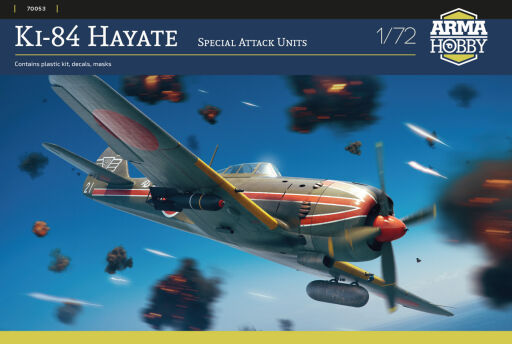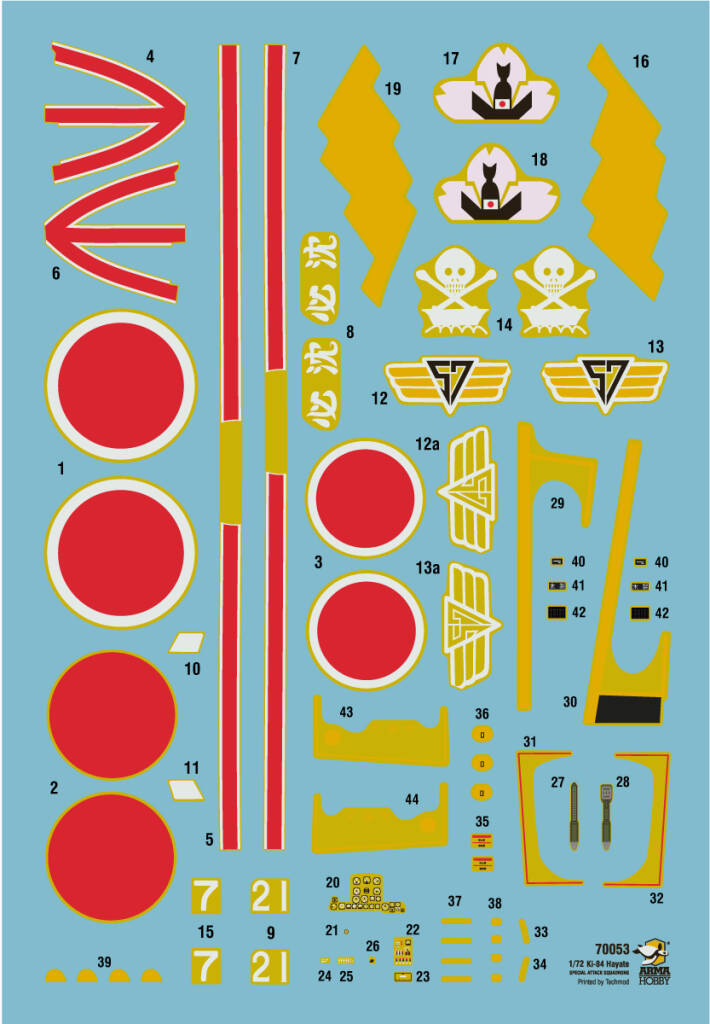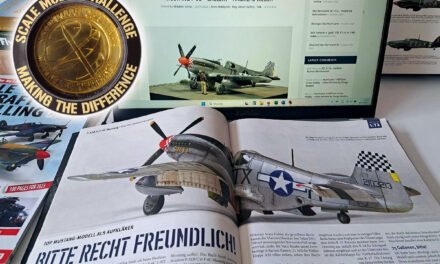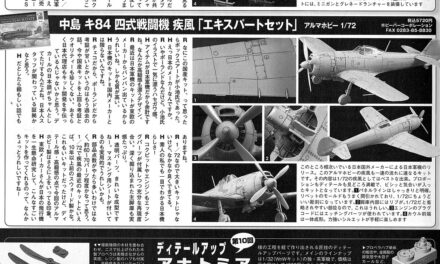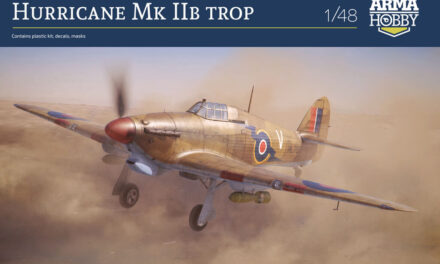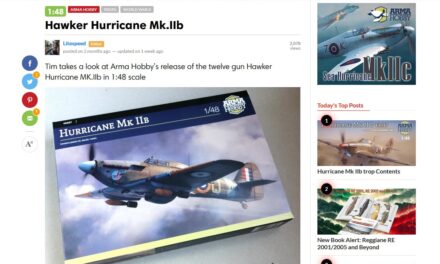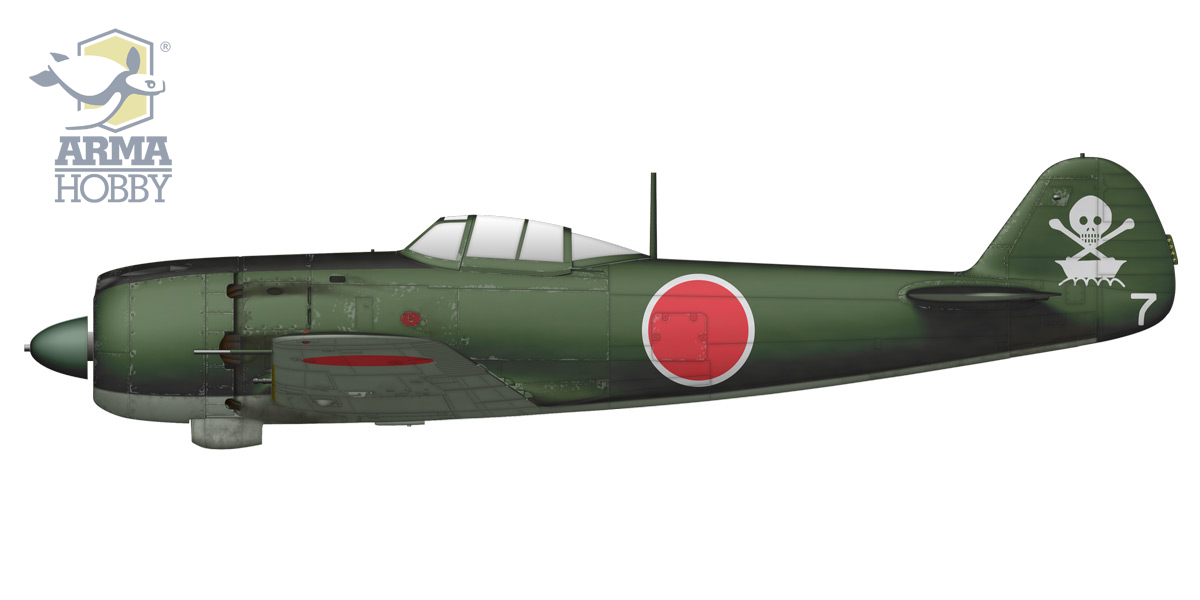
58. Shimbu-tai
The fates of the pilots and aircraft of 58th Shimbu-tai are a carbon copy of those of the men and machines of its sister unit, 57th Shimbu-tai. The aviators of both squadrons came from 14th and 15th Army Fighter Pilots Course in Akeno; together, they had gone through the organization of their units at the Shimodate air base near Tokyo, and then headed to Miyakonojō Airfield in Kyushu to take part in a joint mission (on 25 May 1945) against American ships near Okinawa. I have described all these events in the previous article of the series, referencing the paint scheme of the “White 21” Hayate with a huge arrow on its fuselage.
The Aircraft and Their Pilots
A well-known photograph of the aeroplanes of 58th Shimbu-tai, showing the Ki-84 Kos arranged in an even row. The “White 4” occupies the foreground; our “White 7” Hayate is next, followed by an aircraft with an unknown tactical number (obscured by the soldiers), the “White 12,” and other fighters.

The “White 12” was the aircraft of the squadron’s commander, Lieutenant Takashi Takayanagi. Whereas the “White 4” was flown by one of the section commanders, Lieutenant Yasushi Tominaga, who was at once the deputy commander of the unit. Whereas the “White 7” belonged to Lieutenant Toku Ueda, who was also a section leader in the 58th. All three pilots underwent a complete fighter pilots course in Akeno, and formally held the rank of second lieutenant. However, due to the functions which they performed in the 58th and the general nature of the squadron, they were all promoted to the next serving rank (wartime promotion to lieutenant).

The commander of the 58th, Lieutenant Takashi Takayanagi (second from left), in discussion with colleagues from other units, Miyakonojō, Kyushu, May 1945. Standing in the middle is Second Lieutenant Yoshitoku Ito, a pilot of 57th Shimbu-tai. Second Lieutenant Isamu Okamoto (second from right), the commander of 61st Shimbu-tai
Ki-84 Hayate – recenzja z japońskiego magazynu „Scale Aviation”
The Mission
On 25 May 1945, ten Hayates each from 57th and 58th Shimbu-tai, three suicide aircraft from other units, and eleven Ki-84s tasked with providing fighter cover departed the base. On the way to Okinawa, one aeroplane from the 58th machine fell out of the formation. The aircraft, flown by Corporal Takashi Ino, experienced an engine failure and was forced to land on the field airstrip at Kumanosho. The pilot returned to Miyakonojō and a few days later (on 28 May) took part in a suicide mission together with comrades from other shinfu units. We know that the rest of the formation was attacked near the island of Ie Shima by Thunderbolt fighters from 318th FG series, however the brunt of the American attack was borne by the aircraft of 103rd Sentai. This fact (in all probability) made it possible for three Hayates to attack the fast transport ship (a former escort destroyer, APD-47) USS Bates.
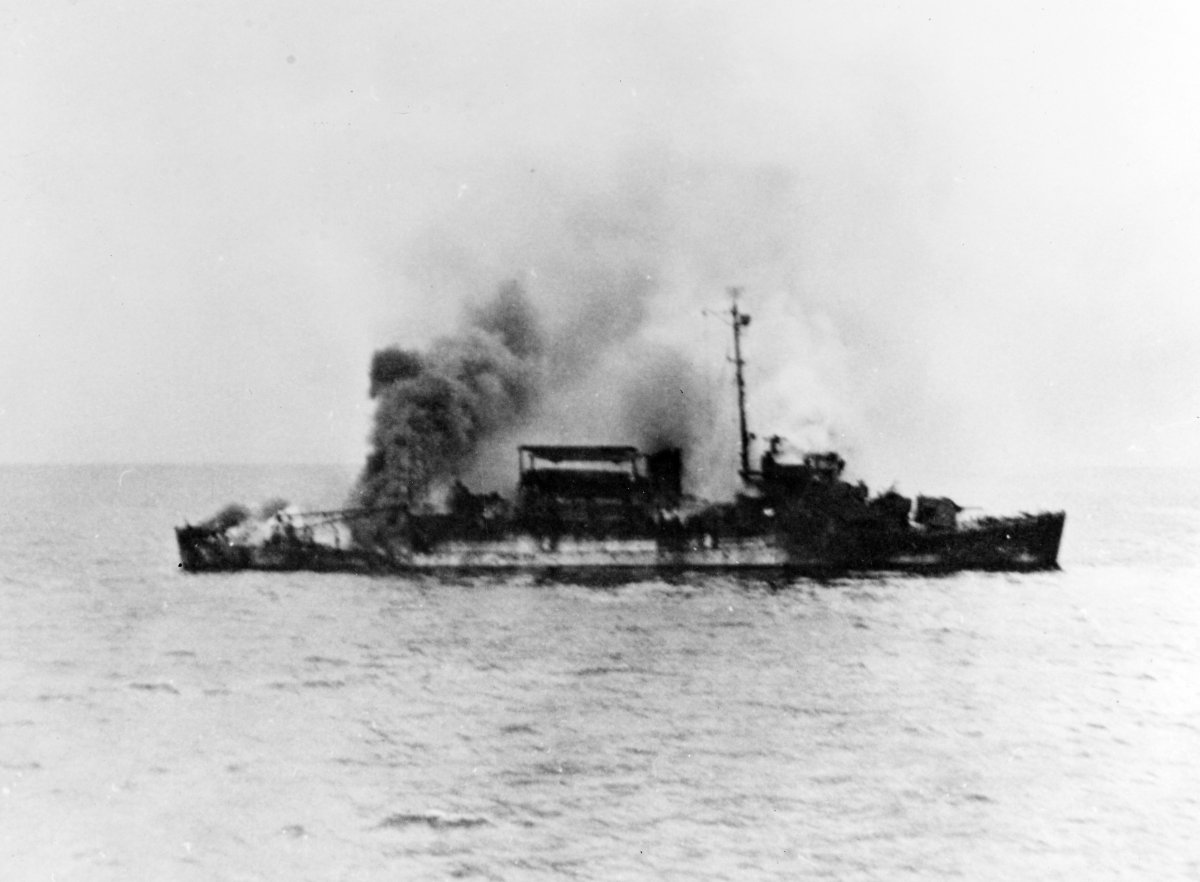
USS Bates (APD-47) after Shimbu-tai Hayates attack
We also know that the American fighter pilots underestimated the magnitude of their success. In an encounter with – as they reported – some thirty Zeroes, they claimed eight aerial victories. But even if only the Hayates of 103rd Sentai became involved in the battle, only one of its eleven aircraft returned to base. Did the self-sacrifice of the Japanese pilots allow all the strike aeroplane to escape unscathed? If so, then what fate befell the remaining nineteen fighters of 57th and 58th Shimbu-tai? This we shall probably never know.
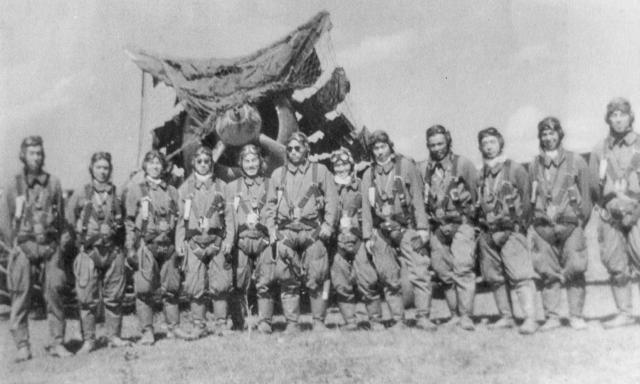
Pilots of 58th Shimbu-tai stand in front of a Hayate covered with masking nets
Camouflage and markings
The above-mentioned photo shows the differences in shades of camouflage colours. The “White 4” is clearly brighter than the next two aircraft in the row, which would suggest that it had an olive-green “uniform”. Purportedly, the aircraft of the commander – the “White 12” – was painted similarly, although this is difficult to confirm by sight as it is standing further away. Whereas our “White 7” definitely carries the regulation dark green paint scheme.

This may suggest that it came from an earlier production series, when shortages of chemical ingredients used in the production of paints did not yet significantly impact their final tone. It is interesting to note that despite the camouflage, the aircraft has a black anti-glare strip on the fuselage in front of the windscreen. In principle, this strip was not mandatory for aircraft in factory camouflage. Nevertheless, it was present on a large number of aeroplanes and, although it was not very common, neither was it a particular rarity.
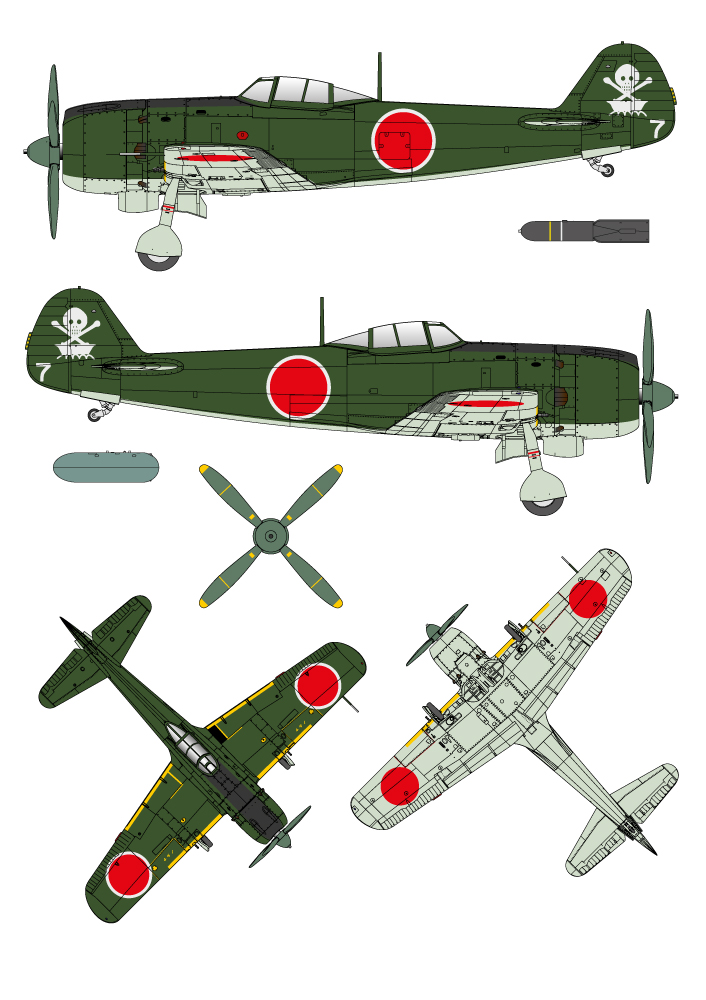
The characteristic emblem of 58th Shimbu-tai brings to mind a pirately pedigree, and indeed this is how it was initially received. The Americans associated it with the insignia of “Commander Blackburn’s boys” – the legendary “Jolly Rogers” of VF-17. The elements visible at the bottom of the sign were identified as a ship (an aircraft carrier?) on the waves of the ocean. However, this interpretation turned out to be completely wrong. In fact, the sign refers to Kamayude – an act of execution consisting in the condemned person being boiled in water or oil. This terrifying albeit not very common form of execution was not, however, a Japanese invention. As a matter of fact, it probably reached Japan around the 15th century and was applied extremely rarely. It was most popular in ancient Persia, although its origins – as we may assume – are considerably older. At more or less the same time, it also appeared in Europe (Spain, France, Italy, England), and the English monarch, Henry VIII, even brought about its official introduction through a special decree (at the beginning of the 16th century). Whatever the case may have been – and with the exception of Persia, mentioned above – the penalty was imposed only for crimes of extreme cruelty, in particular committed against monarchs and their families, or against high-ranking government officials. In England, it was used almost exclusively in properly documented cases of poisoning. Whereas in Japan, it was almost never ordered, although the context – suicidal aviation units attacking an enemy fleet that threatened the Empire – would seem to have been more than obvious.
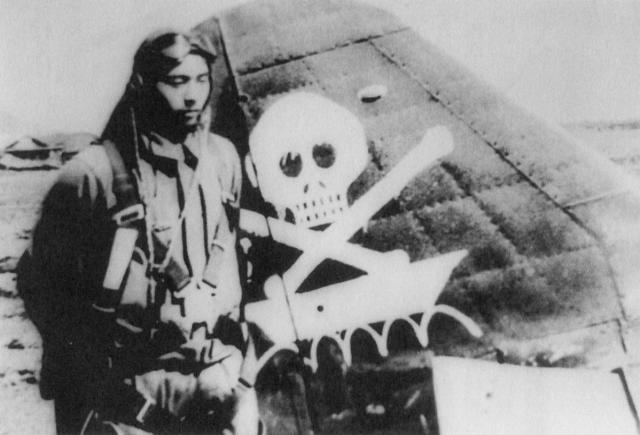
The commander of 58th Shimbu-tai, Lieutenant Takashi Takayanagi, standing next to the tail of his Hayate “White 12”
The emblems on the tails of the Hayates from 58th Shimbu-tai are very unique and differ slightly from each other. Importantly, they were not painted using templates. In a few instances they were applied by the pilots themselves, while sometimes they were helped by the ground crews. According to the accounts of witnesses, on one or two aircraft the fire beneath cauldron was coloured red. However, we do not known which aeroplanes this concerned, and whether these stories are actually based on fact.
See also:
Buy the Ki-84 Hayate Special Attack Units 1/72 model kit in the Armahobby.com store online!
A lover of strong coffee and dark chocolate, incurable optimist, romantic and dreamer, economist by education, historian and modeller by passion. From time immemorial he has been fascinated with aviation in every variety and form. For many years, he has been paying special attention to all aspects of the activities of the Army and Navy Aviation of the Land of the Rising Sun.
This post is also available in:
 polski
polski


